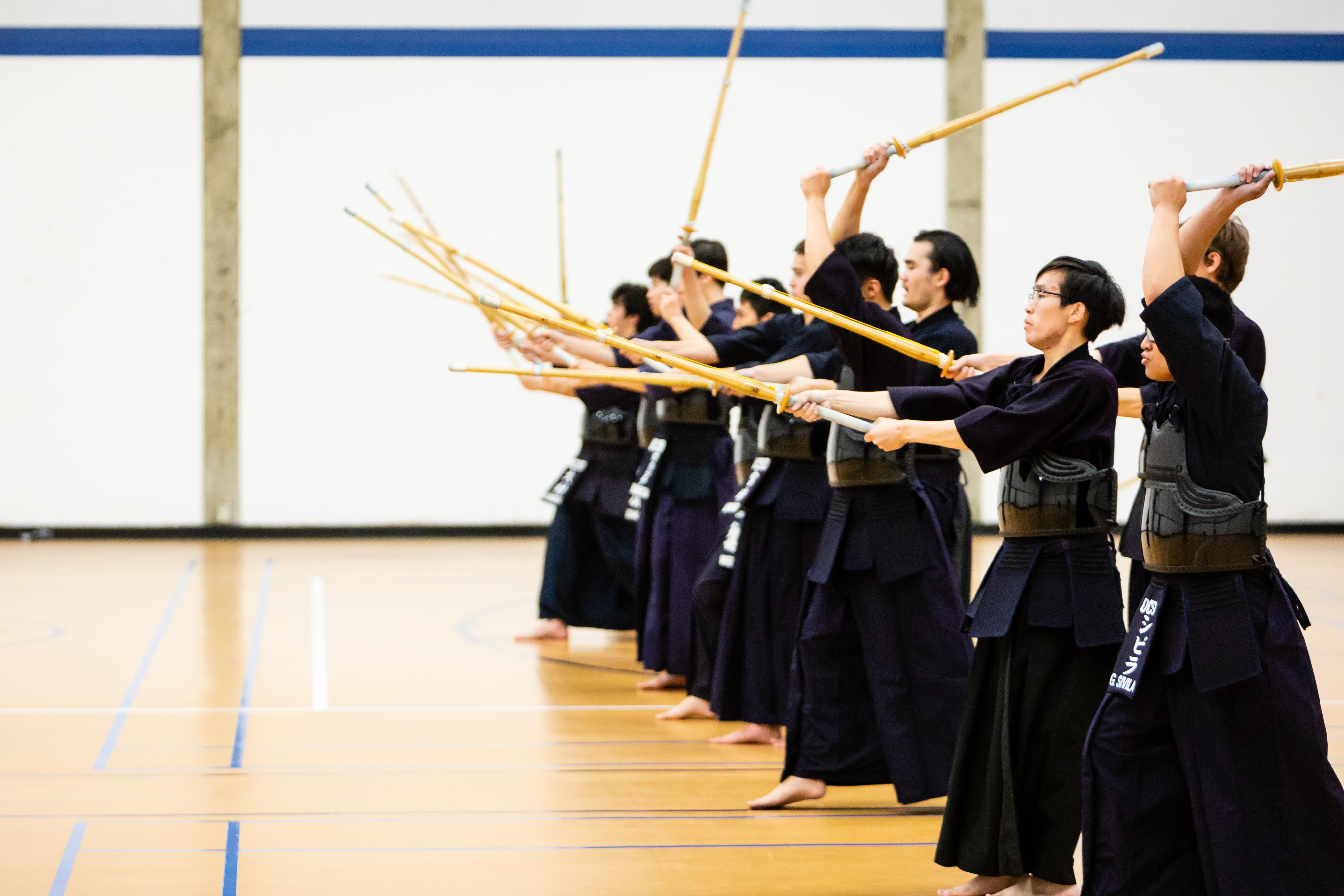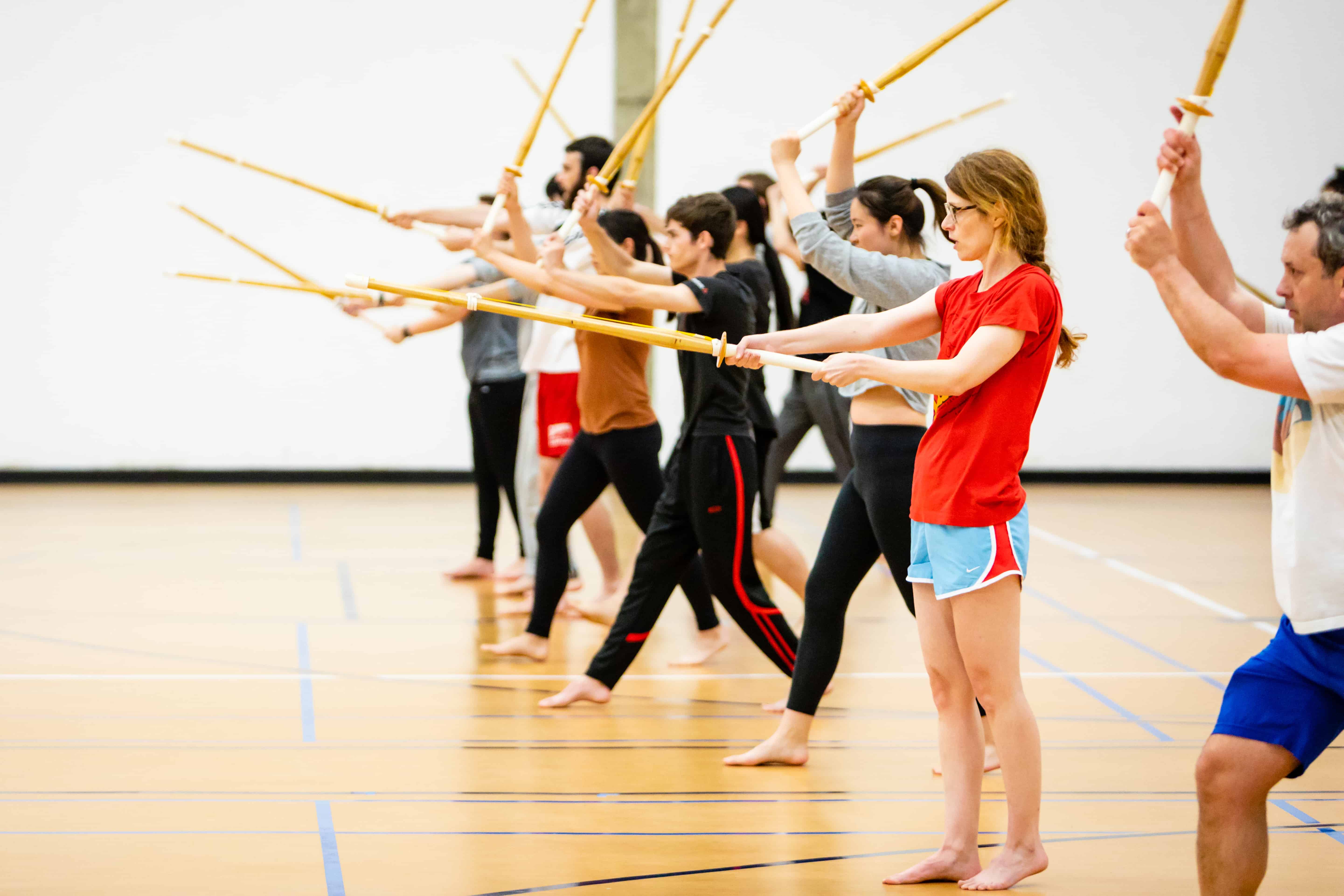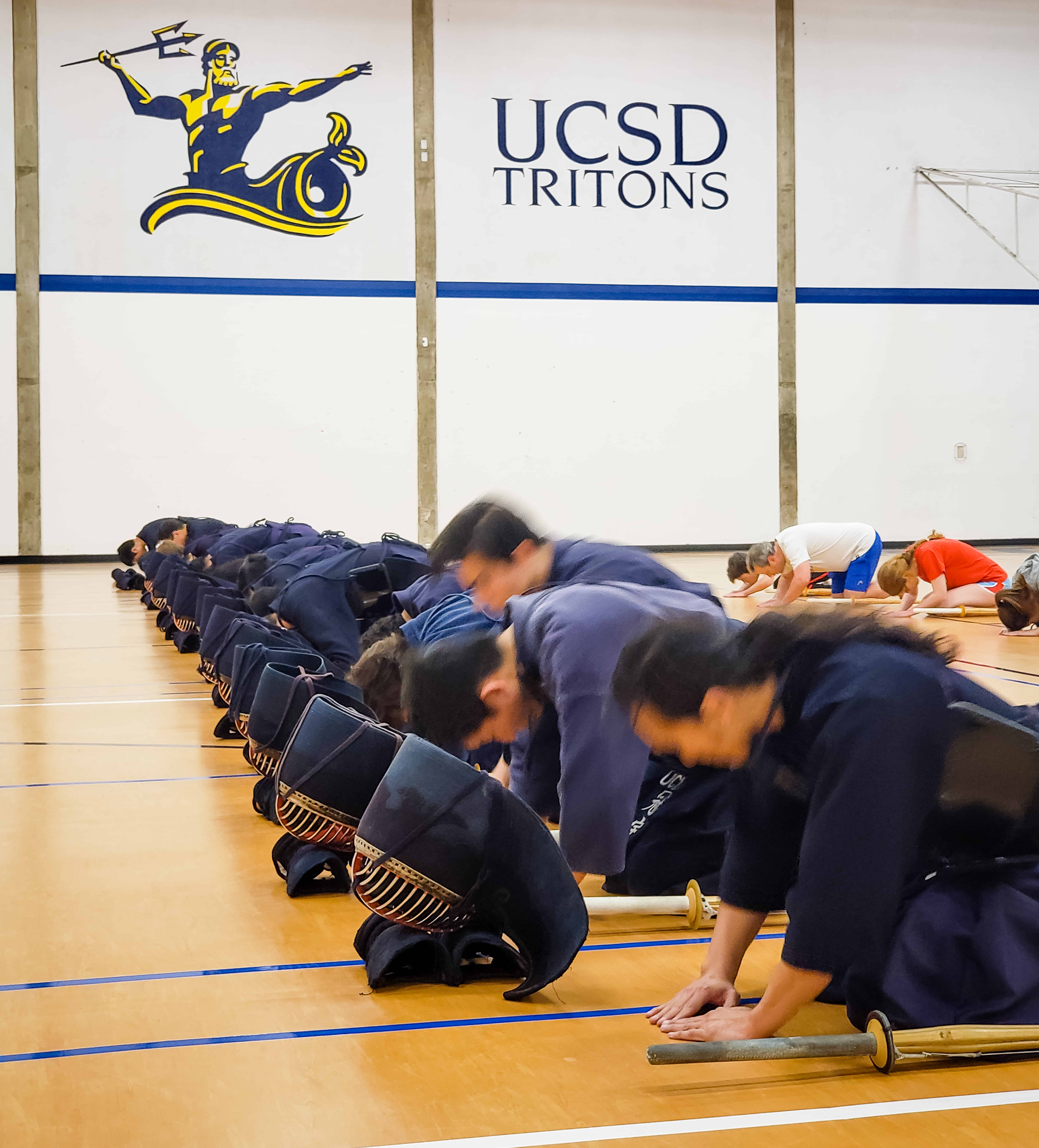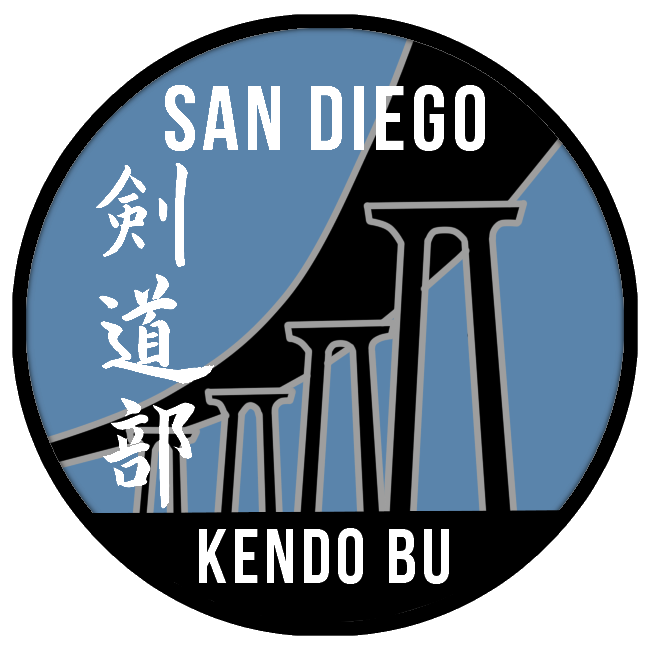Frequently Asked Questions
Q: May anyone join the dojo?
A: YES! San Diego Kendo Bu is open to all ages and abilities. Our dojo teaches both children and adults and is well-known for its openness and acceptance of our diverse membership. The dojo is family-friendly and is well-known in the local community for the friendliness and welcoming nature of our members.
Q: I heard that San Diego Kendo Bu has the most practice opportunities of any dojo in San Diego. When are practices?
A: Yes, this is true! SDKB practices on Tues/Thurs 6:30-8pm for beginners and 7-9pm for advanced players at our dojo in the Nobel Athletic Fields & Recreation Gymnasium, and at UCSD's Rec Gym on Saturday from 12-2pm.
Q: What Happens in Kendo Practice?
A: A Kendo practice is composed of many types of training. Each type has a different purpose for developing the Kendo student. Kendo, like other martial arts requires discipline and a dedication to training.
- A new student begins with learning the basics such as: etiquette (reigi), different postures and footwork, and how to properly swing a sword. The student progresses through a series of skills preparing them to begin training with armor (bogu).
- Once a student begins to practice in armor, a practice may be composed of any
or all of the following types of practice and this will depend upon what the
instructor's focus is at a particular time:
- Kiri-Kaeshi: successively striking the left and right men, practice centering, distance, and proper cutting while building spirit and stamina.
- Waza-Geiko: technique practice in which the student learns to use the many techniques of Kendo with a receiving partner.
- Kakari-Geiko: short, intense, attack practice which teaches continuous alertness, the ability to attack no matter what has come before, as well as building spirit and stamina.
- Ji-Geiko: sparring practice where the kenshi has a chance to try all that he or she has learned with a resisting partner.
- Gokaku-Geiko: sparring practice between two kenshi of similar skill level.
- Hikitate-Geiko: sparring practice where a senior kenshi guides a junior kenshi through practice.
- hiai-Geiko: competition matches which are judged on the basis of a person scoring valid cuts against an opponent.


Q: Do I need to speak Japanese to participate?
A: No, but we encourage our members to learn kendo vocabulary, such as Japanese counting terms, etiquette phrases, and terms for the body parts and techniques. Here is a link to a reference guide from SCKF, including information on vocabulary and etiquette. https://www.eanet.com/sckf/refinfo.htm
Q: Does it hurt when you get hit?
A: Not usually, but sometimes when an opponent misses the target, it can hurt a bit. Kendo is a martial art, so there is some physicality expected. The benefit is that the players are armored, and the dojo members work hard to take care of each others' health and safety.

Q: Are there a lot of injuries in kendo?
A: Kendo injuries are less frequent than all other martial arts, and less frequent than most other mainstream sports in the USA. This was studied in a large research article published in The Physician and Sports Medicine, which can be viewed here: https://www.tandfonline.com/doi/abs/10.1080/00913847.2016.1105093
Q: Where may I purchase kendo equipment?
A: There are many companies, both local and international, that sell kendo equipment. Here are links to some of the companies available that our members have used:
Q: What's with all the bowing and “arigatou gozimashita” at practice?
A: Etiquette is central to kendo and is an important part of life in our dojo. Here's some tips on how you can show good etiquette in the dojo, or practice “rei-ho”:
- Greet everyone in the dojo eagerly when you come to practice, especially the sensei. This is called “ai-satsu”
- Take your shoes off before entering the dojo and when stepping out of the dojo
- Bow before entering and exiting the dojo
- Say “onegaishimasu” (please) before a drill and “arigatou gozaimashita” after a drill
- Do not leave the practice unless it is an emergency, and notify the head instructor if you need to take a break
- Do not leave a sensei's line empty
- Always line up with and bow to each sensei after practice, even if you did not get the opportunity to practice with them

Q: How do I bow properly?
A: There are two kinds of bowing in kendo:
- The majority of bows are with at a 15 degree angle, but at the start/finish of kata, we bow at a 30 degree angle.
- Keep your neck in line with the back, meaning do not tilt the head.
- Keep your eyes on the toes of your opponent, and don't look at the floor when bowing. (Never take your eyes off of your opponent)
Q: Are there belts in kendo?
A: Not in the way that most people think. There are no colored belts or outward signs of rank in kendo. Ranking is done by numeric value.
- The term “kyu” means “class”, often referred to as “mudansha” or “unranked”, and refers to anyone who has not reached the “dan/yudansha” or “ranked” level.
- 1-Dan is equivalent to 1 st degree black belt in most martial arts. Kyu-level students rank up in descending order until they reach 1-kyu, then ascending order once they reach 1-Dan.
- 4-Dan is the first rank that grants the title of Sensei.
- 8-Dan is the highest rank in kendo.
- There are also added degrees of renshi, kyoshi, and hanshi that are added to the highest level sensei from 6-Dan and above.

Q: What is the etiquette when visiting a dojo for the first time?
A: Etiquette in any Japanese martial art is central to learning. It's important to make a good first impression as well when visiting a new dojo or joining for the first time. Here are some tips:
- Email or call the dojo contact person ahead of time and ask permission to join the practice; don't just show up and expect to join, as there may be certain dates with closed practices, or holiday seasons where practice may be cancelled. Some dojos ask new players to come observe before joining the practice.
- Come early to practice and make sure that your equipment is clean and ready.
- Introduce yourself eagerly and meet your contact. Bringing a small token from your home dojo to a visiting dojo is never expected, but is a good way to strengthen bonds between players and dojos.
- Learn from your contact person who the sensei and members are and who the head instructor is, as this may not be obvious. Understand who to ask questions to during and after practice.
- Be prepared to spend some quality time (perhaps drinks?) with the dojo you visit after practice. This is also a way that kendo players strengthen bonds between each other.

Q: I want to learn more about San Diego Kendo Bu! Who may I contact?
A: Please contact our head instructor, Dr. Henry Kikunaga Sensei, at sdkendo@gmail.com
